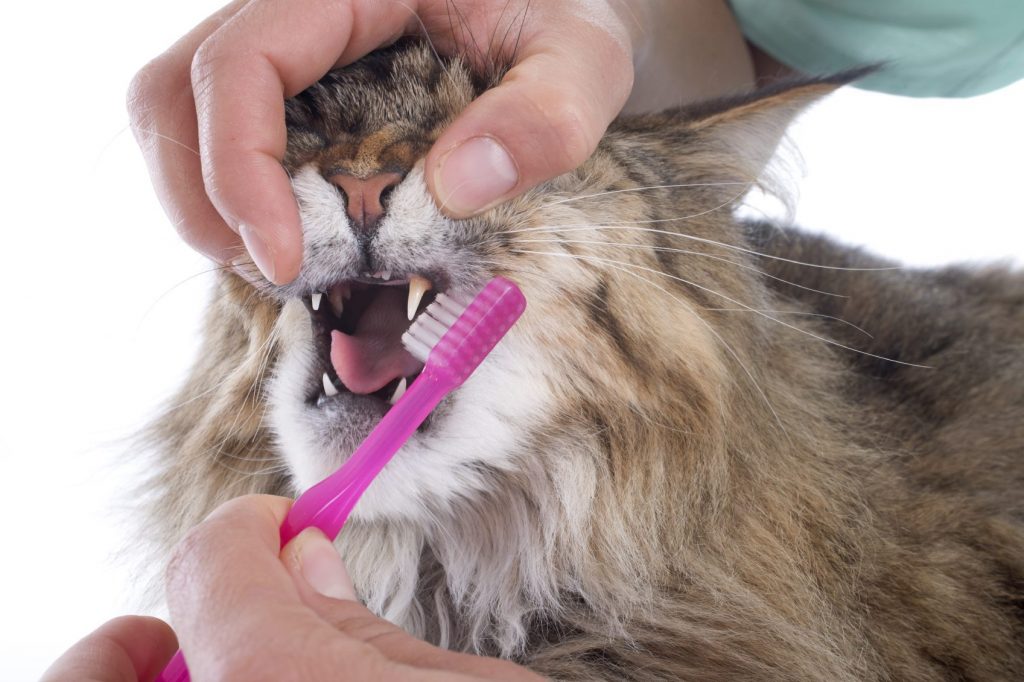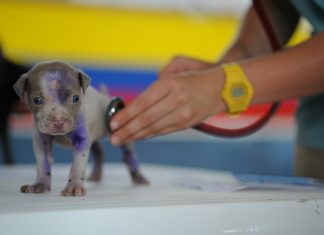Your cat may only “hunt” his toys and some kibble, but he still needs healthy teeth and gums. Poor feline dental health can lead to other health problems, including cardiovascular disease. You can prevent this yourself with regular home checkups and teeth cleanings. Wait until your kitten is two years old to start inspecting his teeth and gums. While his teeth won’t need to be brushed until he has all of his permanent teeth, you may want to start this routine early, to get your cat used to the regular cleanings.

Supplies Needed to Brush Your Cat’s Teeth:
- Cotton Swabs
- A small cat toothbrush
- Feline toothpaste
Never use toothpaste not made for cats, as it is unhealthy for them. You can get feline toothpaste and a cat toothbrush from your vet or at a local pet store.
Ease your cat into the tooth brushing process. Over the span of a few days, perform these steps to help your cat get used to having his teeth brushed. First, touch your cat’s gums with your fingertip and rub gently. Next, use a cotton swab to massage your cat’s gums. Now you need to get your cat used to the taste of his toothpaste. Use a cotton swab to gently rub some on his lips so he can lick it off and get a taste of it. Now it’s time to introduce the toothbrush to your cat. It will either be a really small toothbrush or one that wraps around your fingertip. Put some toothpaste on the cat toothbrush and gently rub your cat’s teeth and gums. Make sure you get every tooth and all the gums. Brush your cat’s teeth regularly – about once a week.
Dental Problems to Look for in Your Cat:
When brushing your cat’s teeth, make a habit of checking your cat’s dental health. Watch out for these signs of poor dental health or a potential problem:
- Extremely bad breath: This can be a sign of a gum condition such as gingivitis or digestive problems.
- Swollen gums
- Excessive drooling
- Loose teeth
- Red line along the gums
- Problems chewing food
- Pus
- Red gums
- Constant pawing at the mouth
If you see any of these signs in your cat, take him to the vet right away. Cats can get gum disease just like humans can. In cats, this can lead to tooth loss and an inability to eat. Swollen gums could also mean your cat has another serious illness, such as kidney disease or feline immunodeficiency virus, or FIV (the equivalent to our HIV). This is why it is so important to pay attention to your cat’s dental health.
Chew toys can also help remove plaque from your cat’s teeth and gums. Cats love to bite and chew, and these toys can keep them from biting you or others in your household. You can find these at your local pet store.
Image: iStock









